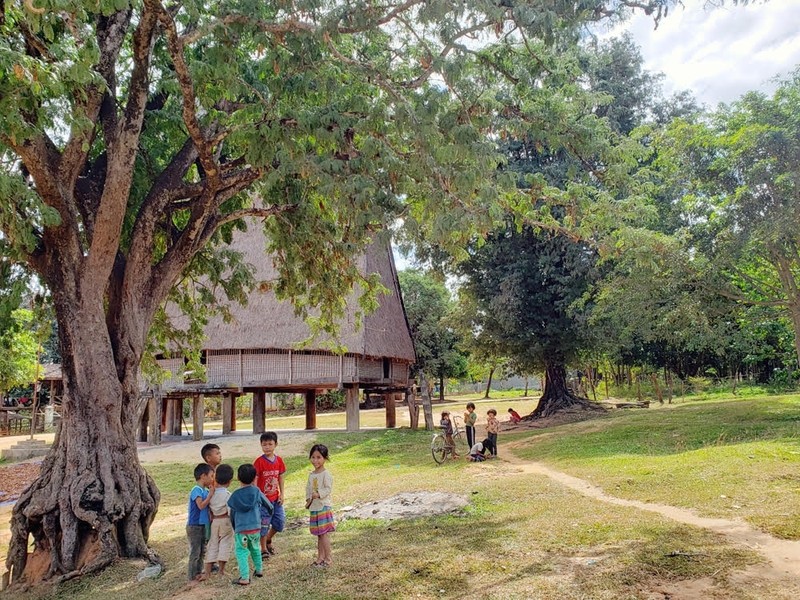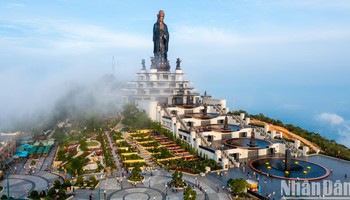 |
From the centre of Kon Tum city, you must go onto the famous suspension bridge Kon Klor - the longest and most beautiful suspension bridge in the Central Highlands across to the Dak Bla river - to finally reach the small village of Kon Jo Dri (or Kon Jo Ri).
 |
Kon Jo Dri belongs to Dak Ro Wa commune, where previously people only mentioned an old village called Kon K'Tu, which is located very close to the Dak Bla stream, without knowing that there is a peaceful Kon Jơ Dri close by. Today, both Kon Jo Dri and Kon K'Tu villages belong to the key tourist route along the Dak Bla stream of Kon Tum province.
 |
The village was called Jo Dri because in the past, the village was located on a land of yellow ochna flowers (“Jodri” in Ba Na language). Nowadays it is the village with the largest and most beautiful communal house in the area.
 |
Kon Jo Dri traditional communal house is located in the middle of the village, beautifully surrounded by many tamarind trees that have grown dozens of years old. The Kon Jo Dri communal house was built in 1997 with a height of 16m and a width of 12m.
 |
For the Central Highlands people in general and the villagers in Kon Jo Dri in particular use the communal house as the center of the village, playing an important role in spiritual culture as well as the spiritual and material significance. This is a place of cultural and religious activities for the whole village, such as cultural exchanges, gong performances, organising New Year festivals, and meetings of the village elders.
 |
Inside the communal house are eight large pillars of precious wood, tightly tied together with high bearing capacity. The floor is also very solid parquet. Particularly, the roof consists of two main roofs and two triangular secondary roofs that are covered with thatched very thick layers of grass.
 |
The communal house is the highest centre of the village, so the lower foundation buttress is very important for the entire structure, including 10 to 14 columns, of which there are eight main frame columns, two to six columns are auxiliary frames, which are responsible for supporting both the floor and the roof. The staircase of Kon Jo Dri Village is designed in the shape of a vegetable image attached to Ba Na ethnic people.
 |
The reason Kon Jo Dri is one of the most intact villages in the Central Highlands is because there are many traditional stilt houses of the Ba Na people. Besides that, it is these traditional house folds that attract visitors the most.
 |
Traditional stilt houses of Ba Na people are rectangular in shape and 12m long. The floor is usually about 1-1.5m from the ground to keep wild animals out. Particularly in the structure of the house, there is a part protruding about 4m in front. Each house has 12 main columns inside and 12 side columns outside the wall.
 |
The yard between the communal house and the village church is a common playground for Ba Na youth every day. No longer an isolated "oasis" on the Dak Bla stream in the past, Kon Jo Dri village’s roads currently are paved for convenient travel and development for people.
 |
The communal house is inherently solemn, majestic and majestic for any person in the Central Highlands but also can turn "gentle" to protect the tolerance of all the jokes of the children.
 |
The Ba Na children, with the most pure hearts in the Central Highlands are also very hospitable to the far people.
















